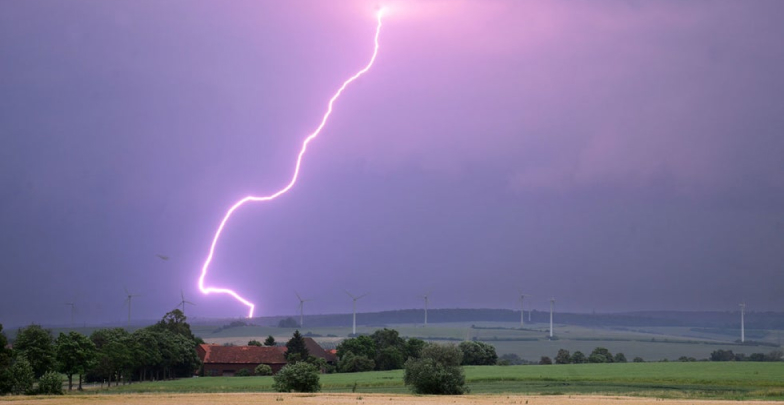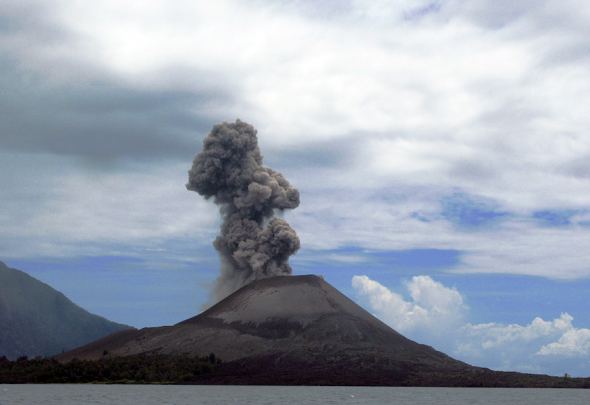
Suono Articolato
Multichannel, Serge Modular, Computer / 30”
Suono Articolato is an ongoing and evolving project that investigate and exploits the aesthetic of natural events that generate the acoustic phenomena of infrasounds trough a listening performance. They can be produced either from tangible and known natural events such as sea waves, earthquakes, explosive volcanic eruptions, severe storms, airflow over mountains, avalanches but also less common and perceivable ones like meteors and aurora.
All these events (increasingly frequent due to climate change) have theirs specific sound characteristic and acoustic composition (some of them, like sea waves are very rich in terms of frequencies while others are more limited) but they’re all capable of generating sound waves with a frequency below the lower limit of human audibility (generally 20 Hz). ①
The scope of the project is to investigate how sound synthesis can reshape and imitate them, how it can create a new but still interesting soundscape in the form of a sound composition and how human bodies react and perceive these energies.
The sound is created trough a Serge modular custom synthesiser controlled and arranged in space and time by the computer.

Einbeck, Germany

Anak Krakatau Volcan, Indonesia
For instance, one of the most interesting yet unexplored events in relation to sound is the aurora.
Sounds that accompany intense auroral displays have been reported throughout history. Because there has never been an instrumental evidence of the sounds, the idea that the latter are the result of auroral processes has been questioned. At the same time, the research done on the observational material of the sounds has suggested that these sounds are real physical effects.
Infrasound produced by aurora has been registered by different teams of researchers. However, the few attempts to record audible sounds related to aurora have failed. ②
A low quality example of the sound of this phenomena from ESA: https://youtu.be/Zcef943eoiQ?si=ekH70NJEDGHRPZgI&t=92
More on Infrasound:
Infrasounds are usually perceived and actively used in the animals world by different species. Whales, elephants, hippopotamuses, rhinoceroses, giraffes, okapis, peacocks, and alligators are known to use infrasound to communicate over distances—up to hundreds of miles in the case of whales. ③
Infrasounds are also generated by a series of man driven events like rocket launches, supersonic aircraft, satellites reentries, nuclear and chemical explosion, certain industrial machines and wind turbine.
Workers exposed to simulated industrial infrasound of 5 and 10 Hz and levels of 100 and 135 dB for 15 minutes* reported feelings of fatigue, apathy, and depression, pressure in the ears, loss of concentration, drowsiness, and vibration of internal organs. ④
Infrasonic waves cause minute changes in the atmospheric pressure which are measured by microbarometers. Infrasound has the ability to cover long distances with little dissipation, which is why infrasound monitoring is a useful technique for detecting atmospheric nuclear explosions.
The first observation of naturally occurring infrasound ever recorded with instruments was in the aftermath of the 1883 eruption of the Krakatoa volcano in Indonesia while te most recent misuration is the eruption of Calbuco volcano, Chile in Apr 2015 ( https://www.youtube.com/watch?v=MxV8W3YuJvg&t=127s).
Infrasonic waves circled the globe at least seven times, shattering windows hundreds of miles away and were recorded worldwide. ⑤
Today the CTBTO (Comprehensive Nuclear-Test-Ban Treaty) maintain a network of 60 array stations situated strategically in 35 countries around the world is active and transmit daily sound data.
* None of this conditions will be replicated during the sound performance
① Sebastian Haskel and David Sygoda. Biology, A contemporary Approach. New York: Amsco, 1996. - Christopher D'ambrose, Frequency Range of Human Hearing Online 2003 https://hypertextbook.com/facts/2003/ChrisDAmbrose.shtml
② Study of Sounds & Acoustical Effects Related to Geomagnetic Storms and Aurora Borealisx http://research.spa.aalto.fi/projects/aurora/index.html
③ Wikipedia Ifrasound - https://en.wikipedia.org/wiki/Infrasound
④ U.S. Department of Health and Human Services - National Toxicology Program - Infrasound Toxicological Summary November 2001 - https://.niehs.nih.gov/
⑤ Infrasound Monitoring for Atmospheric Studies: Challenges in Middle-atmosphere Dynamics and Societal Benefits - Alexis Le Pichon, Elisabeth Blanc, Alain Hauchecome- Springer Nature 2018
Photography courtesy of Luigi Calfa